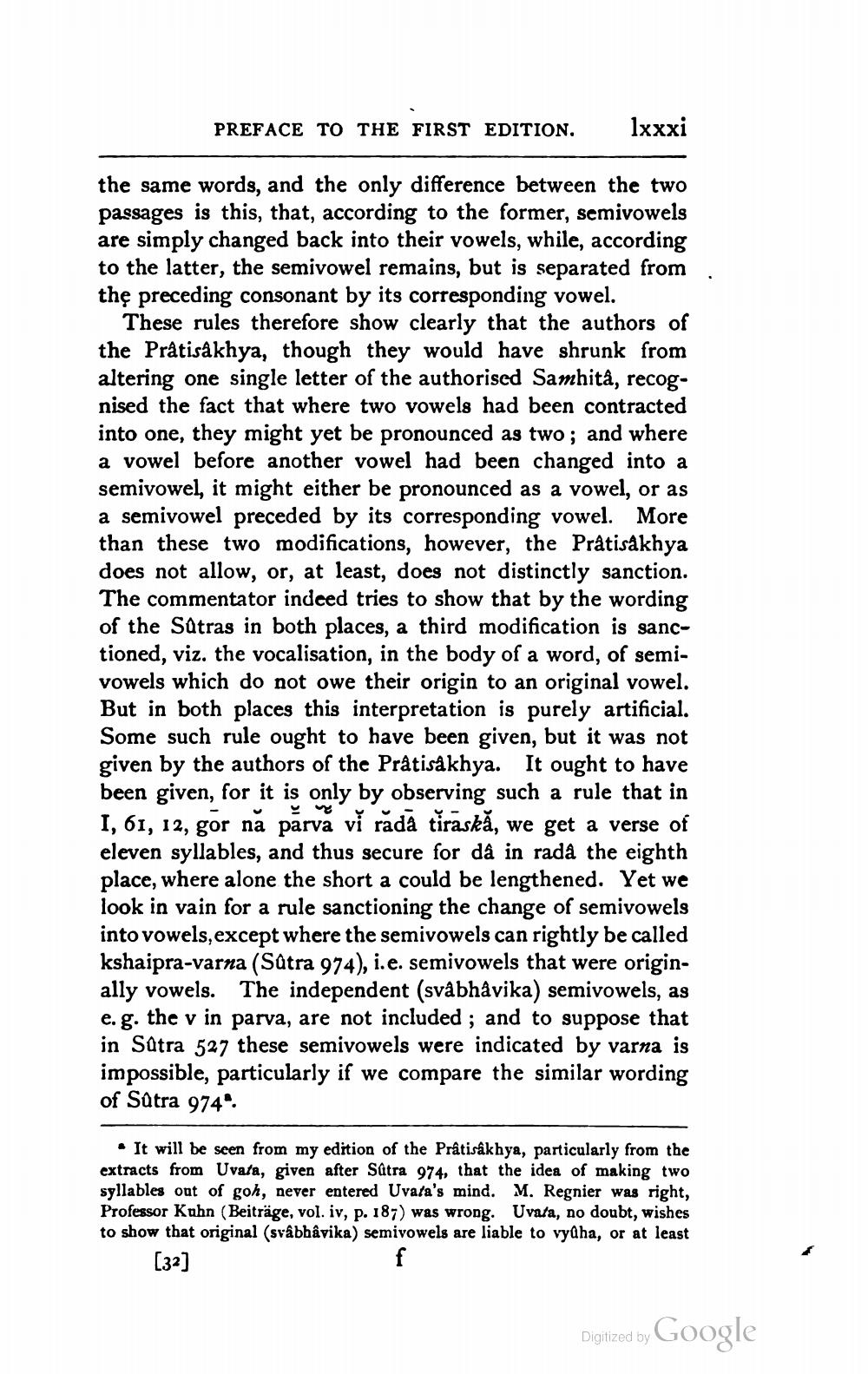________________
PREFACE TO THE FIRST EDITION.
Ixxxi
the same words, and the only difference between the two passages is this, that, according to the former, semivowels are simply changed back into their vowels, while, according to the latter, the semivowel remains, but is separated from the preceding consonant by its corresponding vowel.
These rules therefore show clearly that the authors of the Prátisakhya, though they would have shrunk from altering one single letter of the authorised Samhita, recognised the fact that where two vowels had been contracted into one, they might yet be pronounced as two; and where a vowel before another vowel had been changed into a semivowel, it might either be pronounced as a vowel, or as a semivowel preceded by its corresponding vowel. More than these two modifications, however, the Prâtisakhya does not allow, or, at least, does not distinctly sanction. The commentator indeed tries to show that by the wording of the Satras in both places, a third modification is sanctioned, viz. the vocalisation, in the body of a word, of semivowels which do not owe their origin to an original vowel. But in both places this interpretation is purely artificial. Some such rule ought to have been given, but it was not given by the authors of the Prátisåkhya. It ought to have been given, for it is only by observing such a rule that in I, 61, 12, gor na pārva vi rådā tiraskă, we get a verse of eleven syllables, and thus secure for då in rada the eighth place, where alone the short a could be lengthened. Yet we look in vain for a rule sanctioning the change of semivowels into vowels, except where the semivowels can rightly be called kshaipra-varna (Satra 974), i.e. semivowels that were originally vowels. The independent (svâbhâvika) semivowels, as e. g. the v in parva, are not included ; and to suppose that in Satra 527 these semivowels were indicated by varna is impossible, particularly if we compare the similar wording of Satra 974"
• It will be seen from my edition of the Prátisak hya, particularly from the extracts from Uvata, given after Sätra 974, that the idea of making two syllables out of goh, never entered Uvala's mind. M. Regnier was right, Professor Kuhn (Beiträge, vol. iv, p. 187) was wrong. Uvata, no doubt, wishes to show that original (svâbhâvika) semivowels are liable to vydha, or at least
[32]
Digitized by Google




